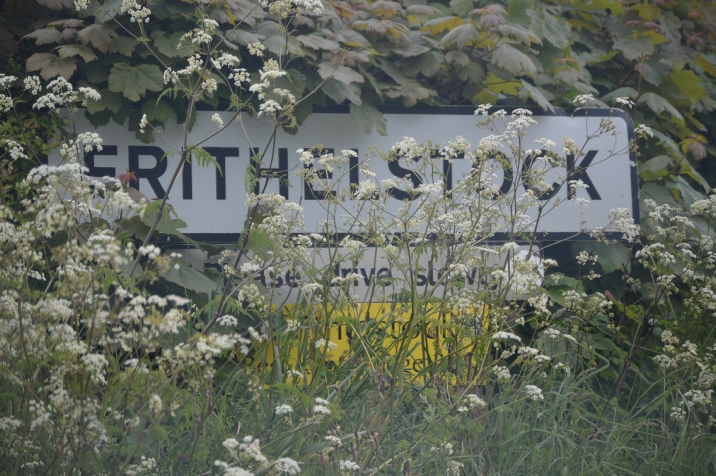
Devon and Cornwall Notes and Queries
383
Cowick Priory
Geoffrey Yeo ’s identification of Cowick Barton as marking the site of Cowick Priory (ante, no. 177) may be accepted without question. The stained glass from the house was form early in the possession of my father, the late Arthur L. Radford. It was reset in the windows at Bovey House, Beer, before 1914 and exhibited at the Society of Antiquaries, after he gave up the lease of the house in 1914. The record f the meeting, on 28 May 1914,
describes the two pieces from ‘Cowick Priory ’ as ‘the arms o f Edward VI with prince’s crown in wreath of amorini’ and ‘red and white Tudor rose and crown, temp. Edward VI’ . 1 The record of acquisition, with other papers concerning my father’s collection perished in the bom bing o f Exeter in 1942.
About 1920 1 went with my father to look at Cowick Barton , the house from which the glass came; it was then in a state of poor repair and we were unable to gain access to the interior. The house of late Elizabethan or Jacobean date was that shown in a sketch published in 1887 . It was the house named Cowick Barton in records from about 1619 and later as noted by Geoffrey Yeo. The external examination showed that the core of the building, including the main range and the wing on the right, in part at least, belonged to an older building. This can only have been the house of the Russells and the record of a date stone of 1540 is borne out by the glass which must date from before the accession of Edward VI in 1547. It is a reasonable conjecture that Russell took over and perhaps added to a part of the priory buildings and that the main range of the house shown in the sketch was the west range of the monastic cloister, which would have housed, on the upper floor, the Prior’s lodging and the main guest rooms. I summarize my father’s conclusions, which were set down in a report, my copy of which was destroyed with his other papers.
I add certain other conclusions based on my own more recent studies of monastic architecture and furnishings. The coffin lid found in 1887 is not
that of Hugh Courtenay, Earl of Devon (ob. 1340); his tomb would have
been surmounted by an effigy emblazoned with the arms of Courtenay. The
coffin lid with its elaborate cross is that of an ecclesiastic, probably a Prior of Cowick. The nearby grave containing a leaden chalice is also that of an
ecclesiastic, perhaps another Prior. Their place of burial is likely to have
been in the Chapter House, forming part of the east range of the priory
buildings. This simple rectangular building would fit the description given
by Geoffrey Yeo, who states that the coffin lay within the ‘sanctuary of a
church or chapel’ and explain Worthy’s comment on the absence of
arcading or elaborate detail ‘save the rich tiled flooring.’ The evidence for
the poverty of Cowick Priory dates almost entirely from the period of the
Hundred Years War, when Alien Priories—Cowick was a cell of the
Norman Abbey of Bee—were under severe financial constraint. In 1462
Cowick and its possessions were granted to Tavistock Abbey. At the
Dissolution, to quote Finberg, the valuation of Tavistock reached ‘the
respectable total of £902 5s 7l4d., one sixth of which was made up of the
Cowick properties.’3 This figure may be compared with the contemporary
assessment of £147 12s. for St. Nicholas Priory, Exeter,4 where there was a
full claustral layout from the beginning.5 It may be added that Oliver’s
account of the burial of Hugh Courtenay at Cowick in 1340, based in part
on Courtenay records, makes it clear that the tomb of the Earl was in the
quire of the Priory Church;6 it is likely to have been about 20m. or more to
the north of the tomb discovered in 1887. It looks as though the Earl,
whose family were regarded as founders and patrons of the Priory, was
asserting his right to a ‘founder’s tom b’ in front of the high altar of the
Priory Church.
n o t e s
1. Proc. Soc. Ant. London, II, xxvi (1913-
2. Western Antiquary, VII (1887-
3. H. P. R. Finberg, Tavistock Abbey, 28.
4. G. Oliver, Monasticon DioecesisExoniensis, 127-
5. Arch. Journ., cxiv (1957), 182.
6. Oliver, op. cit., 154-
C. A. Ralegh Radford
197. Blackdown Barrows
In 1566 a survey was made of the Dynham Estates in Devon (Devon
Record Office, Z17/1). These included Hemyock, and there it was
recorded that there were two Commons, one of which was on Hackpen
D evo n a n d Co r n w a ll N otes a n d Queries 385
Hill. The survey describes the boundaries of this Common, and begins
thus: “ From Sulkeborough going up southwards as far as the road called
Prustepath.” It seems possible that the word “ Sulkeborough” contains
the name “ Sulca” or “ Sulcus” . Both the names “ Sulca” and “ Sulcus”
occur in charters dating from the eighth century, referred to in The Early
Charters o f Devon and Cornwall by H. P. R. Finberg, (p.8). Here it is
recorded that c.760, King Cynewulf of Wessex gave Culm, i.e. Culmstock,
to an un-
Davey, to one Cuthbert. Shortly afterwards Cuthbert transferred Cumbe
to Sulcus, and Adam of Domerham, who presumably saw these lost
charters, says that in 760 Sulca, “ ancilla Christi” (Christ’s Handmaiden), gave 11 hides at Cumbe to Glastonbury Abbey. Nothing more is said in the
Dynham Survey about Sulkeborough, but it seems clear that this barrow,
now destroyed, still bore the name in 1566, of the man or woman who
owned Culmstock eight centuries previously. As Sulca was a Christian, it
can hardly have been her burial place, though the West Saxons had
become Christians only in the previous century. Also in the Culm valley, in
Willand Parish, is Selgar’s Mill, a corn mill. There is no early form of this
name, but it is tempting to associate this too with Sulca or Sulcus. Another
interpretation of Sulkeborough is possible; “ Sulke” may be in origin
“ Sulh” , a well recognised word meaning a “ Plough Furrow” or “ a Gulley” . Neither of these interpretations, however, seems entirely
appropriate on the flat top of Hackpen, at the edge of Common grazing
land.
Sulkeborough was not the only apparently “ named” barrow to stand cffr
the top of the Blackdowns. A hamlet of Hemyock is Simonsborough, not
far from the Wellington Monument; two fields here are named Great, and
Little Barrow Park. Mathews, in his Tales o f the Blackdowns, wrote that:
“ near the road, for ages, there stood a great cairn of stones . . . About
1870, a road contractor named James Bale, carted the whole cairn away.”
Mathews then quotes another writer, Lackington, who “ went to inspect an
immense heap of stones . . . These stones cover about an acre of ground,
and rise to a great height. I should not have taken notice of it had I ever
seen a barrow of stones besides (as large as?) this, and (there were) five
other small barrows half a mile from the large one.” This barrow was also
noted by another writer, De Luc, a geologist; writing of the Blackdowns in
1810, he says that Simonsborough “ contained many thousands of wagonloads” of stones and he “ marvelled at its great height” .
Near to Simonsborough, near to the present Merry Harriers’ Inn, once
stood another named barrow, called by Mathews “ Noon’s Barrow” . He
said it was huge, and still there in 1836, and ascribed its name to the Saxon
King Nunna, who was associated in the Anglo-
Ine of Wessex, fighting together against the Dumnonian King Geraint, in
710. King Ine is said by the Chronicle to have built a fort at Taunton, and
later, in 722, this was demolished by his Queen, for reasons unstated.
Mathew’s association of Noon’s barrow with the name Nunna, might be
386 D e v o n a n d C o r n w a l l N o t e s a n d Q u e r i e s
thought to be pure conjecture, were it not for the fact that Newcott Farm
at Clayhidon, the next parish to Hemyock, was, in 1242, “ Nonicote” ,
which, according to The Place Names o f Devon, is “ Nunna’scott” , or “ the
cote of Nunna’s People” . There may, of course, have been many other
Nunnas, but the association is curious. There is a Nunford, Nunna’s ford,
in Colyton (1333) (see PND).
There were other barrows along the ridge of the Blackdowns; the O.S.
map shows two groups of barrows known as Robin Hood’s Butts, and
Lord Sidmouth’s papers relating to Upottery, refer to “ many stone
barrows” being demolished in the early nineteenth century. In 1814, at the
enquiry that eventually led to the enclosure of the Hemyock Commons, a
claim was made for “ all that common on the west side of the line drawn from Touching’s Thorn to a barrow of stones called Kate’s, (or Kater’s)
Crouch” . This last word may be an Anglicised dialect word for the old
Celtic word “ cruc” , a barrow, referred to in The Place Names o f Devon,
p. 525.
Some of the numerous barrows along the ridge of the Blackdowns were,
doubtless, Bronze Age barrows, like those on Farway Common and
elsewhere; but Simon’s Barrow, Sulca’s Barrow, Noon’s Barrow, and
perhaps Kate’s Crouch, all named, seem to differ both in function, and in
the case of Simonsborough at least, in size, from the rest; can
Simonsborough, indeed, be matched? These barrows appear to be
commemorative rather than funereal, though they may of course, still be
pre-
tempting to associate them with the seventh century incursion of the
Anglo-
culminating on the banks of the Tamar, perhaps by 710. It may be that this
part of Devon was still Dumnonian in some sense in the early eighth
century, and that this explains King Ine’s fort at Taunton, and the named
barrows; but this is no more than conjecture. My thanks to Chris Dracott
for the Deluc reference and to Olive Padel for advice on the place names.
Robin Stanes
198. Sir Robert Bendyn, the King’s Admiral
My curiosity about Robert Bendyn has led me to put together this
account from references in the volumes in the Rolls series.
His name appears in 12981 when he represented Eleanor, daughter of
William de Mohun, in chancery proceedings to rectify the previous actions
of Malcom de Harleye “ escheator this side of the Trent” who had divided
